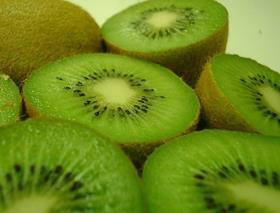
Italian kiwifruit exporters are apparently poised to gain access to the Korean market after talks aimed at removing existing phyosanitary barriers came close to achieving a breakthrough, according to reports.
Access to the potentially lucrative Korean market represents a major development for the Italian kiwifruit business, which has been working towards such a goal since 2004.
Paolo Bruni, president of both Italian industry body CSO and European agricultural association Cogeca, met recently with the Italian ambassador in Seoul, Sergio Mercuri, to discuss progress being made to open the Asian market.
Fruitnet.com understands that a protocol for Italian citrus will soon be finalised by the Korean authorities, with the Italian fresh produce trade now set to concentrate some of its efforts on gaining access for pears, another key export product.
'The abolition of phytosanitary barriers is an important result that has been achieved primarily through the collaboration between CSO and the Italian Ministry of Agriculture,' Bruni commented.
Whether Italian kiwifruit will secure access to Korea in time for the coming season is a moot point, and there remains some uncertainty over the timeframe for entry. 'Italy has accepted the protocol put forward by Korea,' said Renzo Balestri, export sales manager for Apofruit. 'Now the Italian embassy has sent everything back to Korea and we have to wait for their definitive okay. I don't know if we will be able to get going in time for January 2012. We're waiting for official confirmation.'
Despite welcoming the prospect of a protocol to allow Italian kiwifruit imports, Chang Hwa Oh of leading Korean importer Jinwon Trading also cautioned that there would be some key challenges to address in the marketplace, not least given the presence of domestically-grown kiwifruit.
“There are some doubts as to how successful Italian kiwifruit would be here as their production season comes during a period when there’s a lot of domestically-grown fruit in the market as well as a lot of local kiwifruit,” he told Fruitnet.com.
“We are not sure what the price levels will be like. We also expect the Korean quarantine authorities won’t make it easy to gain entry in the beginning. They will want to make sure things move slowly at the start to prevent a flood of product entering the market.”
Korea’s kiwifruit season mirrors Italy’s in terms of timing, he noted, with production starting in earnest during November and availability of stored fruit lasting through March/April. Domestic kiwifruit growers are also very proud of their quality standards, so they will provide stern competition, he added.
“We could see the Italian suppliers send some of the yellow-fleshed Jingold variety, but our experience with the Chilean imports of Jingold this year was not good,” Oh continued. “The fruit tended to have a hard core, the taste was not as good as Zespri Gold from New Zealand, and there were some shelf life issues.”
Nevertheless, Mr Oh indicated that his company would handle “a limited volume” of Italian kiwifruit once access was achieved in order to test the market.
Korean kiwifruit imports have been relatively stable in recent years, according to customs data. After reaching 34,658 tonnes in 2007, they have dipped below 30,000 tonnes for the past three years, coming in at 28,515 tonnes in 2010. The overwhelming majority of imports come from Southern Hemisphere suppliers Chile and New Zealand, whose production is counterseasonal to Korea’s.



